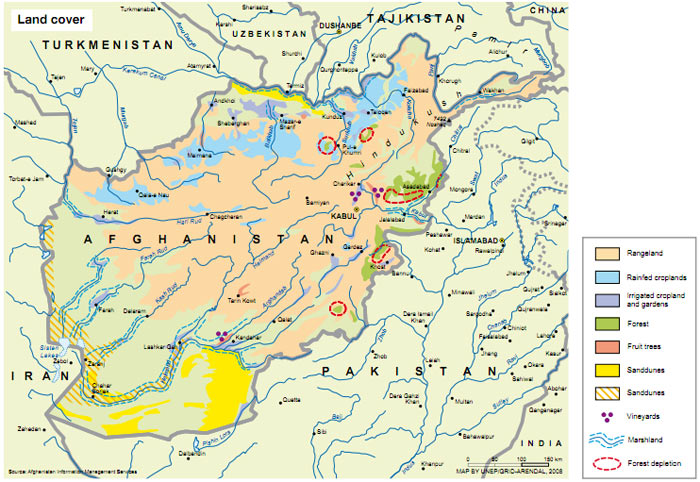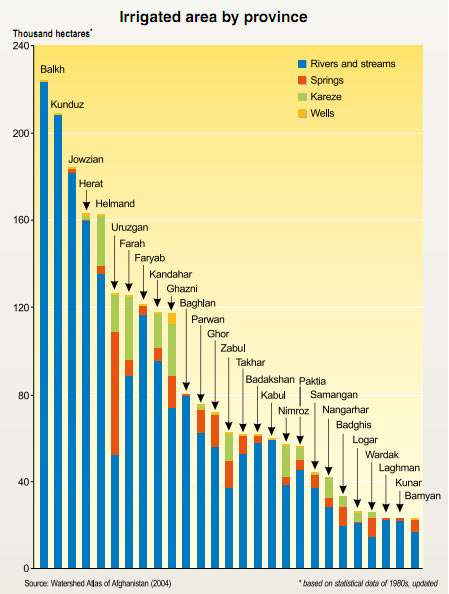
Water Resources Management in Afghanistan: The Issues and Options
Agriculture
The arable agricultural resource base of Afghanistan is about 8 million ha, which is 12 percent of the total land area. Major arable lands for permanent crops are located in the north and western parts of the country as shown in Figure. The irrigated land is usually located in the river basins of the North, West, and the Southwest. Though there are irrigated lands in the southern and eastern parts of the country, the proportion is small compared to North, West, and the Southwest.

Arable permanent crops in Afghanistan
There are roughly 3.9 million ha of cultivated land of which 1.3 million ha is rain fed and 2.6 million ha is irrigated. This irrigated area produces almost 85 percent of all agricultural productions. In 1978, the total area (irrigated and rain fed) under cereal crops was about 3.4 million ha. The total production was 4.15 million tons of which 2.65 million tons was wheat. Table 4 gives the details of cultivated area, production and yields of major cereal crops in 1978.
Cultivated area, production and yields of cereal crops in Afghanistan in 1978
| Crops | Area (Million ha ) | Area (% age of Total ) | Production (Million tons) | Yield (Tons/ha) |
| Wheat | 2,35 | 69,3 | 2,65 | 1,13 |
| Maize | 0,48 | 14,2 | 0,76 | 1,58 |
| Rice | 0,21 | 6,2 | 0,40 | 1,91 |
| Barley | 0,31 | 9,1 | 0,3 | 0,97 |
| Other cereals | 0,04 | 0,1 | 0,04 | 0,81 |
| Total | 3,39 | 100 | 4,15 | 1,22 |
The recent succession of dry years has reduced the annually cultivated rain fed area to less than 0.5 million ha. Currently, rain fed cereal production has fallen to about 0.6 tons/ha, which is 10 percent lower than the expected production in a normal year. As a result, food security is becoming a challenge particularly in the northern areas where rain fed agriculture is widely undertaken.
Source: Water Resources Management in Afghanistan: The Issues and Options by Asad Sarwar Qureshi, IWMI, Working Paper 49


Source: Afghanistan’s environment 2008. Executive summary, UNEP
